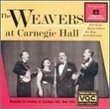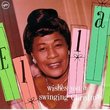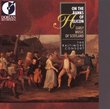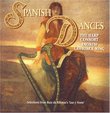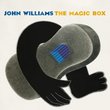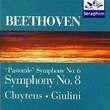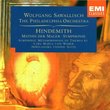| All Artists: Franz Joseph Haydn, Jenö Jandó Title: Haydn: Piano Sonatas Nos. 53-56 and 58; Un Piccolo Divertimento Members Wishing: 0 Total Copies: 0 Label: Naxos Release Date: 6/28/1994 Genre: Classical Styles: Forms & Genres, Sonatas, Historical Periods, Classical (c.1770-1830), Instruments, Keyboard Number of Discs: 1 SwapaCD Credits: 1 UPC: 730099584524 |
Search - Franz Joseph Haydn, Jenö Jandó :: Haydn: Piano Sonatas Nos. 53-56 and 58; Un Piccolo Divertimento
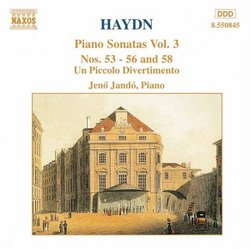 | Franz Joseph Haydn, Jenö Jandó Haydn: Piano Sonatas Nos. 53-56 and 58; Un Piccolo Divertimento Genre: Classical
This disc, Volume 3 of the series, contains five sonatas and the work usually known as Andante and Variations in F Minor, here with the early title Un piccolo divertimento. Whatever you call it, it's a highly unusual pi... more » |
Larger Image |
CD DetailsSynopsis
Amazon.com This disc, Volume 3 of the series, contains five sonatas and the work usually known as Andante and Variations in F Minor, here with the early title Un piccolo divertimento. Whatever you call it, it's a highly unusual piece, variations on two themes each so long that they are varied only twice. It's also one of Haydn's most deeply emotional piano works, and contrasts nicely with the quirky two-movement sonatas that make up most of the disc. As before, Jenö Jandó's performances treat each work as an individual and characterize each one convincingly. Regardless of price, these are among the best Haydn piano discs in the catalog. --Leslie Gerber Similar CDs
Similarly Requested CDs
|
CD ReviewsAnother Haydn Winner From Naxos. John Austin | Kangaroo Ground, Australia | 10/01/2000 (5 out of 5 stars) "You can't go wrong with any Naxos CD of Haydn's music. Virtually every CD on the market so far is a winner. This CD offers 70 minutes of good value. The Bb Sonata is particularly engaging. It receives a sprightly performance from the Jeno Jando. As with other of his recordings, I sometimes am aware of soft grunts and crooning noises, an accompaniment to his piano playing not evident when I heard him in recital in Melbourne." Delightful !!! M. Levitt - classical music buff | Philadelphia, PA | 01/14/2006 (5 out of 5 stars) "This disc, Volume 3 of Jeno Jando's series of Haydn Piano Sonatas, by turns is whimsical, deeply moving, delightful, profound. It is pure Haydn: the sudden silences, the humor, the humanity and warmth of the music, the contrasts in mood, the sprightliness - the joyousness - of the music. In my honest opinion, Haydn's piano sonatas surpass those of Mozart. The opposite, I think, is true of their piano concerti, but as overall instrumental pieces, Haydn reigns, however lovely and soaring the melodies in Mozart piano sonatas. Jeno Jando's playing is superb; he seems to be at his best in Haydn. I particularly love the quicksilver changes in mood, say from the humor and whimsy of Sonata no.58 to the deeply touching and slower Variations in F Minor that concludes the disc. This CD is a joint triumph: Haydn's wonderful music; Jando's effervescent, sparkling, sensitive playing; and Naxos' bringing them together in fine, digital sound. A CD I'll return to often. Highly recommended!" Exploring the Haydn Sonatas, Nos. 53 -- 56,58, f minor varia Robin Friedman | Washington, D.C. United States | 09/29/2009 (5 out of 5 stars) "With this CD, we are approaching the end of Jeno Jando's ten-volume cycle of the Haydn piano sonatas on the budget-priced Naxos label. The individual recordings date from the mid 1990s, but they were released in 2009 as a box set in commemoration of the 200th anniversary of Haydn's death. The five sonatas on this CD date from the 1780s with three of them, no. 54-56, composed as a set for the 16 year old Princess Marie Hermenegild Esterhazy in celebration of her marriage to the grandson of Haydn's patron, Nikolaus Esterhazy. The f minor variations, also known as Sonata, un piccolo divertimento, is one of Haydn's masterpieces and was composed somewhat later, in 1793. Jando is an outstanding interpreter of Haydn. While each of the works on this CD has been recorded with some frequency, it is valuable to have Jando's readings and to have these works arranged chronologically on a single CD. I will offer here some comments on each of the individual pieces on this disk.
The sonata no. 53 in e minor, Hob 34, was published in 1784 but probably was composed earlier. It is the only three-movement work on this CD. The opening presto shows Haydn at his most dramatic and bleak in a sharply angular minor key movement. There is a short, contrasting secondary theme in the major key. The second movement, adagio, is the only slow middle movement in this collection. It is graceful, florid, and highly ornamented. The adagio leads without pause to a movement marked innocentemente, with a simple, folk-like theme in e minor which alternates with a similar theme in the major key. The three sonatas for Princess Esterhazy date from 1784 and are each in two movements. These are beautifully written, if deceptively simple, short works, described by a reviewer of the time as "more difficult to perform than one initially believes. They demand the utmost precision and much delicacy in performance." Sonata no. 54 in G major, Hob.40, opens with another theme marked "innocente". It features a delicate, meditative theme in G major followed by a counterpart theme in g minor. Both themes undergo substantial embellishment and variation in the course of the movement until a large, triumphant conclusion is reached with the final return of the G major theme. The sonata concludes with a rapid-fire presto which again includes contrasts of major and minor themes. The sonata no. 55 in B major, Hob. 41 is the only sonata form movement in the Esterhazy set. The opening allegro contrasts a short, highly syncopated theme with a lyrical theme played over accompanying triplets. The movement includes some unexpected changes of harmonies, including a section in the minor key. The work concludes with an allegro di molto in counterpoint, in which the hands echo each other, and with a minor middle section before the embellished return of the main theme. The final Esterhazy sonata is in no. 56 in D major, Hob. 42, which opens with a broad-based and elaborate theme and set of variations marked andante con expressione. The abrupt pauses and silences in this movement are found frequently in Haydn's piano sonatas. The lively finale also has something of a call-and-response pattern between the right and left hands before it works to a surprise quiet close. Although it resembles the Esterhazy sonatas in its two-movement format, the sonata no. 58 in C major is one of Haydn's largest works for the piano. The work dates from 1789 and it exploits the range of the piano in a manner that Haydn had not attempted in his earlier sonatas. The opening movement is an extended andante con expressione. It consists of a set of variations on a slow, noble and reflective theme. The music moves throughout the keyboard, between major and minor key versions of the theme. There are long passages of runs at the top of the instrument and blocked chords at lower part of the piano's register. Haydn exploits the dynamic capabilities of the new fortepiano to compose an extensive, grand movement. The work concludes with a rondo which begins quietly but soon assumes a virtuosic, almost orchestral-like texture. The Variations in f minor with which this CD concludes is one of Haydn's most frequently played piano works. It is in a single movement which consists, as do several other movements on this CD, of a set of double variations, with a minor key theme, followed by a closely related major key theme and then successive and increasingly intense variations on each theme. After two sets of variations on each theme, the work takes wings with a passionate minor key conclusion followed by a quiet close. Listeners who want to hear more of this music may be interested in Marc-Andre Hamelin's recent two collections of Haydn sonatas, both of which consist of two CDs. Hamelin's two sets include all the works on this CD and more. I learned a great deal about differing approaches to these works by comparing Hamelin's readings with Jando's. The Hamelin recordings, linked below, have more informative liner notes. The quote above describing the contemporary reaction to the Esterhazy sonatas is taken from the liner notes to Hamelin's first recording of the Haydn sonatas. Robin Friedman Haydn: Piano Sonatas Haydn: Piano Sonatas Vol.2" |

 Track Listings (12) - Disc #1
Track Listings (12) - Disc #1



